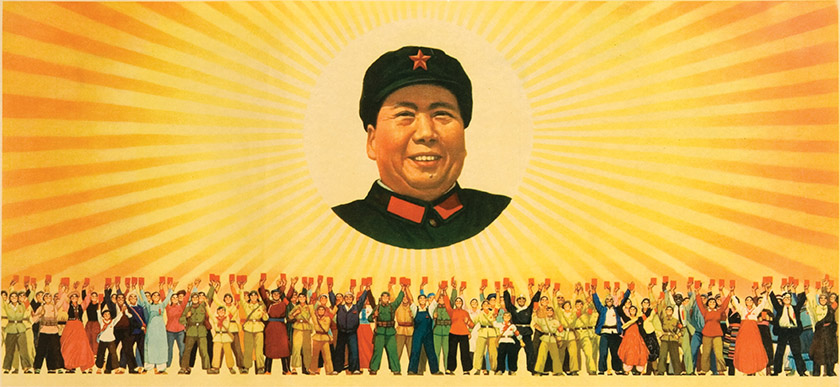
Controlling the State: Chinese Propaganda Posters
Traditionally, Chinese political culture has used the arts to control behavior and thought. This practice did not stop once the People’s Republic of China was established.
Mao Zedong launched The Cultural Revolution 50 years ago in May 1966. Propaganda posters became the ideal medium to propagate the ideology of the Chinese Communist Party.
The Cultural Revolution is the name given to Mao’s attempt to reassert his beliefs in China in the 1960s. It was a mass campaign to purge the country of ‘impure’ elements and revive the revolutionary spirit. All art had to serve politics and propaganda posters came to dominate communications, containing clear indications of what behavior was acceptable to a largely rural and illiterate population.
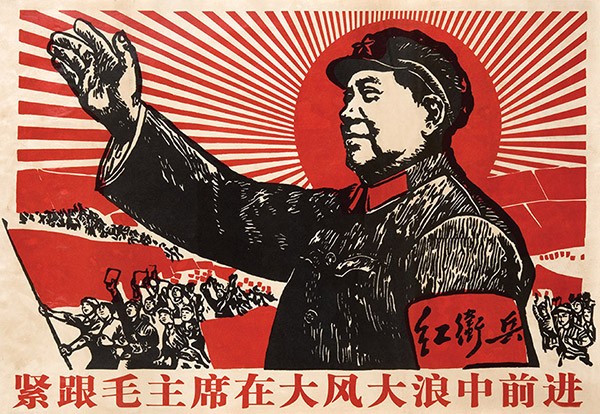
Follow Chairman Mao Closely to March Forward in Wind and Waves, November 1969 (colour litho) Chinese School / © The Chambers Gallery, London / Bridgeman Images
The posters drew much from Soviet and other totalitarian states’ propaganda and are often striking in their simplicity of design and coloring, usually done in simple red, white and black.
All forms of media and communication were tightly controlled to reflect Mao Zedong Thought. Mao summed up his expectations of revolutionary art by demanding “a unity of politics and art, a unity of content and form, a unity of revolutionary political content and the most perfect artistic form possible.”
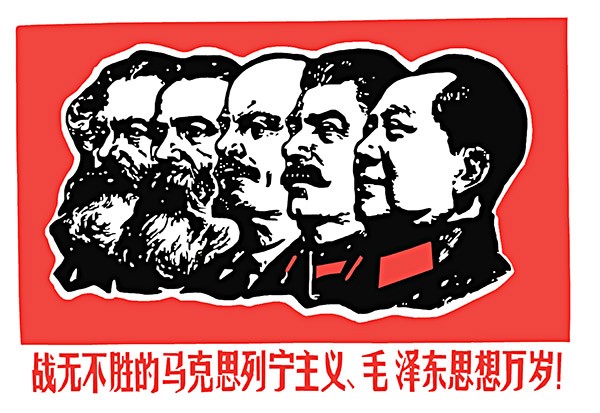
Long Live the Invincible Marxism, Leninism and Mao Zedong Thought!, 1967 Chinese School / © The Chambers Gallery, London / Bridgeman Images
The Cult of Mao
As zealous members of the Red Guard sought to transform all aspects of Chinese life in his name, Mao was elevated to a god-like status. Mao already had appeared prominently on propaganda posters as far back as the 1940s, despite his ambiguous warnings against a personality cult. The intensity of his portrayal in the second half of the 1960s, however, was unparalleled.
During this period Mao almost always was pictured looking happy, sometimes with arm outstretched, waving to the adoring masses. The poster above shows Mao in front of Joseph Stalin, Vladimir Lenin, Friedrich Engels, and Karl Marx.
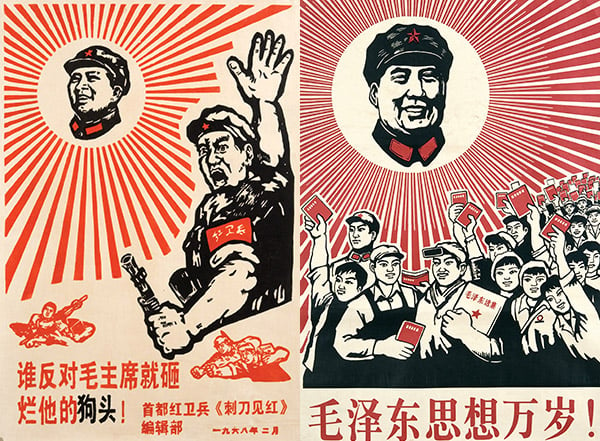
Whoever Opposes Chairman Mao Will Have His Dog Head Smashed In! Red Guards of the Capital “Bloody Bayonet” Editorial Committee, 1968; Long Live the thoughts of Chairman Mao, 1969
© The Chambers Gallery, London / Bridgeman Images
The Little Red Book
Mao managed to mobilize an army of overly enthusiastic Chinese youths to take up his cause who would come to be known as Red Guards. To rally them behind his cause, one of the most printed books in history was produced.
The Little Red Book was a series of quotations gathered from Mao’s lectures and writings that explained to the people of China the ideology of the Chinese Communist Party. During the Cultural Revolution, it was an unwritten rule that all people had to read the book. In many propaganda posters from this period a lot of the characters are clutching their copy of Mao’s book.
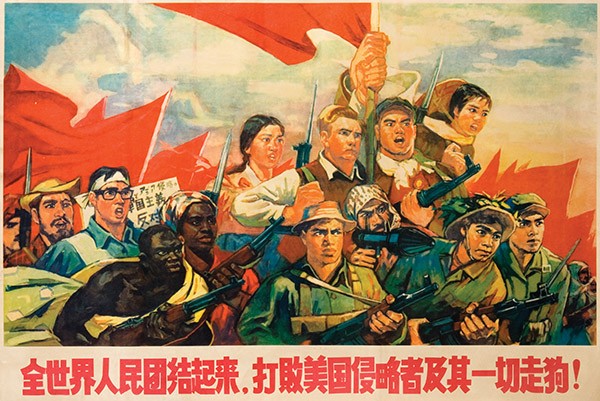
People of the Whole World Unite and Defeat the American Aggressors and All Their Running Dogs, 1969 Chinese School/ © The Chambers Gallery, London / Bridgeman Images
Down with imperialism!
During the initial phase of the Cultural Revolution (1966-1969), China embarked on a crusade against both Soviet revisionism and American imperialism.
This Cultural Revolution poster shows a strong image of people of color, including Latin Americans, Arabs, Asians and Africans united and fighting against what appears to be the representatives of American Imperialism. Running dogs refer to the followers, and in this case anyone who sides with America foreign policies.
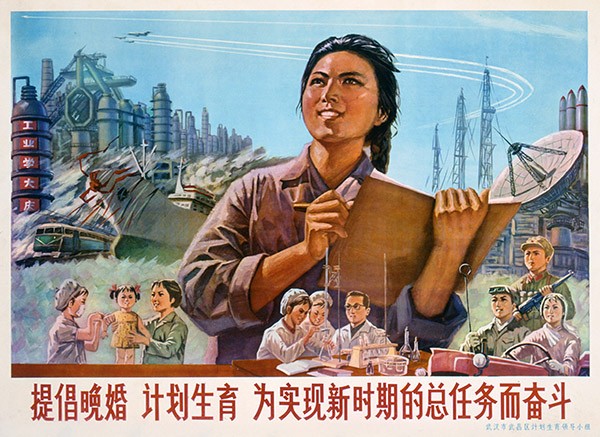
‘Encourage Late Marriage, Plan for Birth, Work Hard for the New Age’
Published for the Wuchang Town Birth Control Group, Wuhan City, 1970s, Chinese School / DaTo Images / Bridgeman Images
Population Control
Soon after taking power in 1949 Mao condemned birth control but over time the liabilities of a rapidly growing population soon became apparent. This 1970s Chinese propaganda poster was one of the early one child policy posters encouraging women to dedicate their lives to work and to get married late in order to control China’s population growth.

Chairman Mao Receiving in Person the Little Generals of the Red Guards, June 1967, Chinese School/ © The Chambers Gallery, London / Bridgeman Images
Cultural history of China told through posters
According to Barbara Mittler, Maoist era propaganda left memories of violence with many Chinese, and their psychological strains drove many to madness and death. Today, this type of propaganda is no longer used by the Chinese Communist Party and it is largely commercialized for nostalgic purposes.
Find out More
All images in this post are from Bridgeman Images. Contact the team for licensing enquiries.
